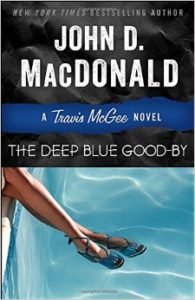

Lost worlds and ports of call

 Andrea Camilleri’s latest Montalbano novel is disappointing on many levels. Not until you read the afterword do you learn that, although it was published in the US in August 2017, that Camilleri wrote A Nest of Vipers back in 2008. Camilleri notes that it was held back as the theme was too similar to his 2004 novel, The Paper Moon. The so-called similarity is not the most disappointing aspect, at least to me. Rather, with Montalbano aging (ever so slightly) with each novel, I had looked forward to reading more about the ramifications from the two previous novels, A Beam of Light and A Voice in the Night. With 20 plus novels sketching Montalbano’s life, each one takes us little further, and A Nest of Vipers fails in that regard.
Andrea Camilleri’s latest Montalbano novel is disappointing on many levels. Not until you read the afterword do you learn that, although it was published in the US in August 2017, that Camilleri wrote A Nest of Vipers back in 2008. Camilleri notes that it was held back as the theme was too similar to his 2004 novel, The Paper Moon. The so-called similarity is not the most disappointing aspect, at least to me. Rather, with Montalbano aging (ever so slightly) with each novel, I had looked forward to reading more about the ramifications from the two previous novels, A Beam of Light and A Voice in the Night. With 20 plus novels sketching Montalbano’s life, each one takes us little further, and A Nest of Vipers fails in that regard.
A greater disappointment, however, is that I solved the mystery less than five chapters into the novel. Usually with Camileri’s novels he’s far more careful: sowing seeds of doubt, planting false leads, tying in strange coincidences and sub-plots. An early sub-plot lasts no more than a few paragraphs, and other characters play minor roles. Even the title gives away too much.
A Nest of Vipers had one thing going for it: the murder victim. Father of two adult siblings, he was a ruthless business-man, philander, and blackmailer. Everyone, it seems, had a motive for killing him. Yet Camilleri ticks off one wronged person after another almost as fast as we’re introduced to them and their motives.
The entire supporting cast in the fictional town of Vigàta is in place, playing their familiar roles. Montalbano’s long-distance girl-friend makes a brief appearances. Enzo the chef prepares vast meals just for the Inspector. Fazio and Augello remain steadfast lieutenants, and Catarella mangles the language as brutally and comically as ever. Even the good forensics coroner Pasquano manages to insult Montalbano about “busting his balls” several times. While the supporting cast rarely veers from the set path, the various people Montalbano meets during his vacation draw little interest, at least this time. While the supporting cast has grown stale over the years, Camilleri usually draws other interesting characters, from young, beautiful students with dark pasts, to businessmen with various scruples, and the odd Mafia member in the background. Not so much this time, as only two main characters get much time in the novel, and then fades into the background. One character hovers in the background, then acts as a deus ex machina to explain a crucial bit of evidence right at the end.
A Nest of Vipers lacks much of the humanity in other Montalbano novels, and were it not originally written so many years ago I would call it a step back in the series. Had it been published in the right sequence maybe I would have walked away with a different impression. In the meantime, while I wait for the next novel, maybe it’s time to re-read The Age of Doubt or The Dance of the Seagull. In the meantime, titles of untranslated works continue to tease at least two more novels in the series.
For the second time I’ve ended my editorship of Prometheus, the newsletter of the Libertarian Futurist Society.
I became the fifth editor in the newsletter’s long history back in 1994. For five years I produced quarterly print newsletters, with reviews, interviews, articles, and more on fiction, film, and other cultural aspects dealing with liberty. I took a break, overwhelmed with other organization stuff, since resolved by a more active LFS board of directors.
In 2005 I once again volunteered to edit the newsletter, and for the next 11 years produced an additional array of print copies. During that entire time I lobbied for a greater internet presence for the LFS and the newsletter. The age of the blog rose and fell (to a certain degree). Social media today rules, with Facebook, Twitter, Tumblr, and the micro-commentariat post snippets of dialog. I’m probably guilty of the same, tweeting tiny snippets and links far more often than writing anything here. Well, I’ve been busy trying to figure out how to write crime novels. That’s my excuse and I’m sticking to it.
In 2016 I resigned once again as the Prometheus editor. Newsletters kept falling further and further behind schedule. I ended up having to write more and more content, save one or two other consistent contributors. My focus shifted away from science fiction toward crime fiction. If I don’t read SF, I can’t review SF, can’t keep my finger on the pulse of SF. I felt like Sisyphus, pushing a heavy rock up a hill, and with each published issue rushing down hill once more to press my shoulder to the rock.
I’m happy to say that the LFS finally has its own blog, as of May 2017. I’m writing a series of reviews on the collected stories of Pool Anderson, one on Jack Vance that appeared in the newsletter, and possibly a revision of my 50 works libertarian sf fans should read.
The audience for the LFS blog eventually will exceed the newsletter. There are pros and cons in that regard, as non-libertarians will feast on what they dislike, but so be it. Comes with the territory, I suppose.
Recently I picked up six volumes of the collected stories of Paul Anderson, published by NESFA press between 2009 and 2014. Since the last book appeared over two years ago, I’m not sure if there are future volumes planned.
Each book is hefty, full of classic short stories, novellas, occasional poetry, cover art by Bob Eccleton, John Picacio and introductions by noted writers in the SF field. Reading through all the stories could take a year or more, as each book is so dense and rich. I’ll have more to say as I read the books. For now I’ll just enjoy the covers.
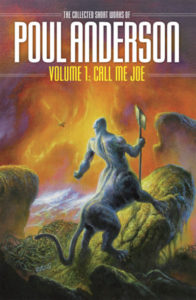

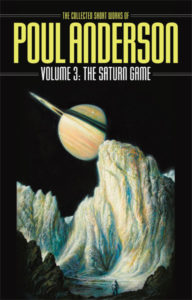
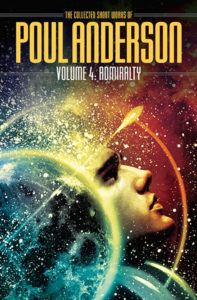

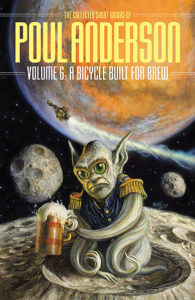
From 1965 to 1975 appeared ten novels by Maj Sjöwall and Per Wahlöö, collectively titled The Story of a Crime. The protagonist, police detective Martin Beck, links all the novels, though he by no means acts alone.
It took me a couple of years to find and read all ten books. I think I read them more or less in order, although I read them as I bought them. I intend to re-read them in proper sequence.
These ten novels are hailed by many writers and critics are essential to anyone interested in Scandinavian crime fiction. Some aspects are timeless, some horribly dated. They’re not the best books I’ve read, but I can see how they influenced other writers.
Along with the four Henning Mankell books pictured here, all with a curiously similar cover design, I’ve bought four other Mankell novels, six Per Wahloo (and Maj Sjowall) novels, two Asa Larrson novels, five by Jo Nesbø, a couple of P.D. James books (one fiction, one non-fiction), a Patricia Highsmith classic, and a detective book by the 2014 Nobel Literature Prize winner: the French writer, Patrick Modiano.
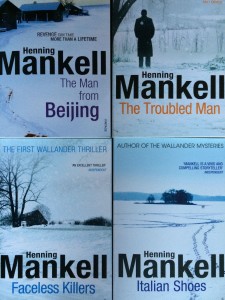
Scandinavian crime landscapes
I haven’t read all the books yet. Nesbø has a cinematic and kinetic style, steeped in Hollywood. His anti-hero is dark, bitter, unlikeable. Mankell is more sedate, his main character morose but not as bitter and self-destructive as Nesbø’s Harry Hole. I’m still reading Asa Larrson, and don’t yet have a feel for her main characters yet. I know the Highsmith novel will annoy me, because the main character is a conman, a crook, a swindler. I haven’t read James in well over a decade, but I used to like her books. Wahloo and Sjowall come highly recommended, and I look forward to reading their books.
Growing up in the 1980s I read fiction across all genres. A teenager at the time, I read my own books, but also read as many books as possible from my parents’ shelves. This included thrillers like Alistair MacLean, Hammond Innes, Wilbur Smith, crime writers like Ed McBain and Agatha Christie, along with a host of names long since forgotten.
The past two decades I’ve generally not read much crime fiction, with the exception of the Norwegian writer Gunnar Staalesen. He lives and writes about Bergen, a place I lived a few years, and where I have roots. The names of other crime/mystery writers slide past my consciousness, but I tended to either read science fiction or American novels from the early twentieth century.
A couple of years ago I read Stieg Larsson’s Millennium trilogy, like so many others. This year I picked up a couple of Ian Rankin books, and once again I feel the strong pull of crime fiction. Oddly enough, I’m reading quite a few Scandinavian and European books, from Rankin to Andrea Camilleri, to Jo Nesbø to Asa Larsson, along with other Swedish writers like Henning Mankel and Per Wahlöö.
I have yet to dive into American crime fiction, but I have list of names, most of them authors I’ve never read, which I think is an exciting prospect.
There used to be a book store in San Antonio called “Remember the Alibi.” I find it tragic that this store is gone, but even more so now that I’m re-discovering this genre.
© 2025 Anders Monsen
Theme by Anders Noren — Up ↑